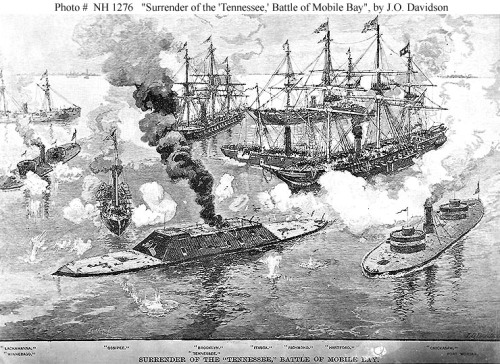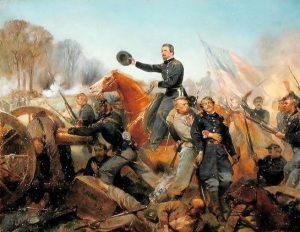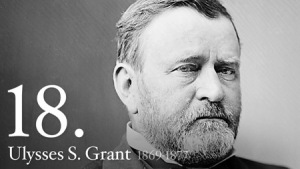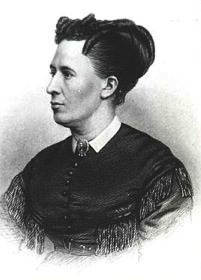Torpedo: 1. electric ray; 2. a large, cigar-shaped, self-propelled underwater projectile for launching against enemy ships from a submarine, airplane, etc.; it is detonated by contact, sound, etc.; 3. a metal case containing explosives, especially one used as an underwater mine.
– Webster’s New World College Dictionary (4th edition)
Growing up in the 1960’s, I was a history buff and a big fan of World War II movies. For me, the second definition of “torpedo” came to mind whenever I heard the term.
You might remember United States Admiral David Farragut’s famous quote, “Damn the torpedoes, full speed ahead,” a quote which seemed out of kilter with a sea battle that took place in August, 1864. The Confederates had invented the first submarine, the CSS Hunley, but it was nothing like its progeny of the first and second world wars, and it certainly did not launch torpedoes.
My fifth-grade teacher recognized the annual confusion of young boys who watched too many war movies. She explained that during the Civil War, a torpedo referred to the third definition, a metal case containing explosives. “Ohhh,” all of my male classmates nodded as one, “just like the mines the Nazis planted in the English Channel at Normandy in The Longest Day” (for the younger readers, The Longest Day was a three-hour 1962 black-and-white movie about D-Day).
The significance of the Battle of Mobile Bay cannot be overstated. Grant’s troops were bogged down at Petersburg. Sherman had not yet taken Atlanta. Lincoln expected to be a one-term President.
Southern-born, Admiral David Farragut led the Union armada. Maryland-born and a former United States Naval Academy superintendent, Admiral Franklin Buchanan commanded the Confederate forces.
The Southerners had built an ironclad, the Tennessee, to thwart the Union’s largely wooden-ship navy. Fully understanding the probable outcome of challenging the iron beast with wooden ships, Farragut waited for the arrival of four ironclads of his own.

Entitled “Surrender of the ‘Tennessee,’ Battle of Mobile Bay”, it depicts CSS Tennessee in the center foreground, surrounded by the Union warships (from left to right): Lackawanna, Winnebago, Ossipee, Brooklyn, Itasca, Richmond, Hartford and Chickasaw. Fort Morgan is shown in the right distance. (Source: history.navy.mil)
Three forts stood in the Union’s path: Fort Powell near Cedar Point, Fort Gaines on Dauphin Island, and Fort Morgan at Mobile Point. Chief among these was Fort Morgan. Farragut had hoped to employ a large contingent of infantry on Dauphin Island to keep the rebels at Fort Gaines occupied. Because the Union had lost so many troops in Grant’s Virginia campaign, only 2,000 soldiers were available. The number proved sufficient.
The Union spent weeks attempting to remove the torpedoes in their path. Farragut had doubts about whether they could remove all of them, but found some comfort in reports that many of them had corroded and were no longer effective. On Friday morning, August 5, Farragut’s armada tested the waters. One ironclad, the Tecumseh, hit one or more non-corroded mines. The Tecumseh went down with 94 of her 114-man crew. The commanding officer of the lead ship, the Brooklyn, declined to go forward, for fear of the mines.
It was under these circumstances that Farragut’s flag ship, the Hartford, took the lead. Farragut had climbed the mainmast rigging above the smoke and ordered a sailor to tie him there with a rope. He would not be denied. The line between folly and courage is a thin one. From his vantage point, like Ulysses tied to the mast when skirting the sirens, he shouted his famous order, “Damn the torpedoes! Full speed ahead!”
Not all went smoothly afterward. Buchanan (who previously had commanded the ironclad Virginia) commanded the Tennessee and inflicted considerable damage on the Union fleet before taking a hit that fractured his knee. The ironclad and the rest of his fleet ultimately succumbed to superior numbers. By August 23, all three forts were in Union hands. The victor of New Orleans sixteen months earlier, Farragut had added Mobile Bay to his list of major conquests. With the Union victory, Lincoln’s autumn prospects brightened significantly.
Sources:
- Catton, Bruce, Never Call Retreat, p. 390, New York: Fall River Press, 1965 (2009 Fall River Press edition).
- Foote, Shelby, The Civil War, Red River to Appomattox, pp. 492-508, New York: Random House, 1974 (First Vintage Books Edition, 1986).
- McPherson, James M., Ordeal by Fire, p. 477, New York: McGraw-Hill, 1982 (3rd Edition, 2001).
- Civil War Trust, http://www.civilwar.org/education/history/biographies/franklin-b-buchanan.
- Department of the Navy, Naval Historical Center, “Admiral Franklin Buchanan, Confederate States Navy (1800-1874),” http://www.history.navy.mil/photos/pers-us/suspers-b/f-buchan.html.










